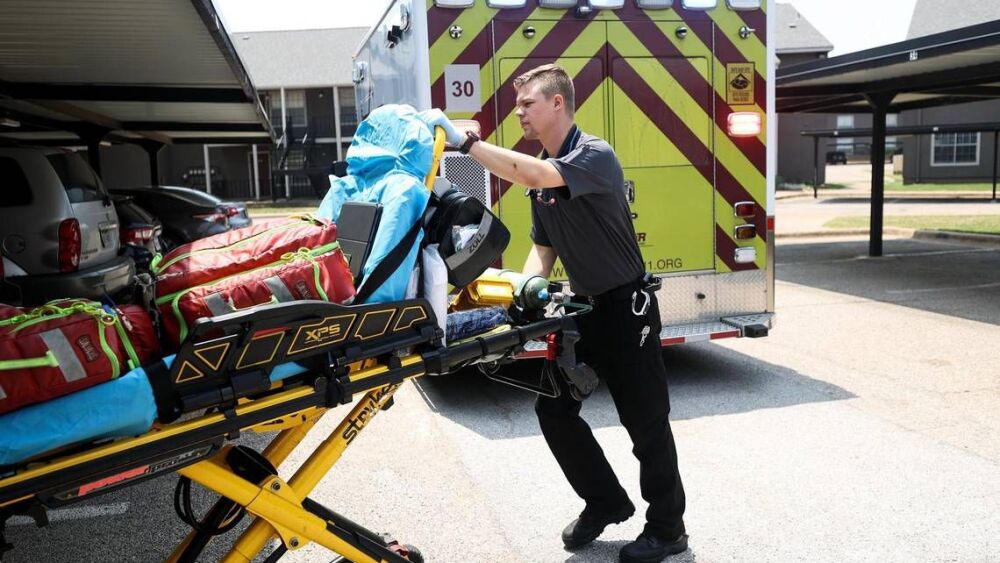Thirteen years ago, I wrote a column for EMS1 stating that yes, EMS professionals do indeed diagnose patients. I was tired of hearing from people – EMS people, at that! – that we are minimally skilled technicians who only provide symptomatic treatment without any deeper understanding of why, the “monkey-see, monkey-do” segment of healthcare.
The “we don’t diagnose” dogma has been around as long as I’ve been in EMS, and it took on a new life in 1994 with the release of the 1994 DOT EMT Curriculum, a document gutted by the insistence of several major stakeholders of the day that the curriculum be capped AT 110 hours. To pare down the curriculum to that length, the working group was forced to leave out most of the anatomy and pathophysiology, and focus mostly on symptom relief treatment, and we trained a generation of monkey-see, monkey-do EMTs under that curriculum.
And, like we often do in EMS, some of us clung to dogma long after its expiration date. People claimed that “diagnosis” was a legal term that only doctors and nurses could use, and when pressed to provide citations of EMS providers being disciplined or sued for diagnosing patients, could only refer to cases where EMS providers got into legal trouble for MISdiagnosing a patient, and providing a harmful intervention that would have gotten them sued whether they called the decision it was based upon a diagnosis, a general impression, a presumptive diagnosis or a paramedic wild guess.
Legal liability
The legal liability resulted from the care provided (or lack thereof), not the semantics on how that care decision was made. But this is 2022, and now most of us understand that we do indeed diagnose patients. You can’t even choose what protocol to follow unless you have a rough diagnosis of what is wrong with the patient.
That is, unless you’re a politician in Arizona, where they have again tried to make “diagnose” a taboo word for EMS providers.
One June 7, 2022 Arizona Governor Doug Ducey signed into law House Bill 2431, that states:
A. An emergency medical care technician shall contact the physician who is providing administrative medical direction or a physician in the base hospital’s emergency department consistent with local protocols and practice guidelines if emergency medical services transportation is not provided to a patient.
B. An emergency medical care technician may not do either of the following:
1. Provide a patient with a medical diagnosis [and use that medical diagnosis as the basis for counseling the patient to decline emergency medical services transportation.]
[2. Counsel a patient to decline emergency medical services transportation, except as part of a specific alternate destination or treat-and-refer program that includes quality management and comprehensive medical direction oversight.]
C. An emergency medical care technician shall explain to a patient the risks and consequences to the patient’s health of not being transported.
The italicized text there is my own, but this is the meat of the bill. It merely states that EMS providers may not use a diagnosis to talk a patient out of going to the hospital. The bill was proposed by Rep. Amish Shah, a physician with a background in emergency medicine who noted that the Phoenix and other metropolitan areas had a high rate of non-transport inconsistent with industry norms, and asserted that many Arizona EMS providers were actively discouraging patients from being transported to the hospital.
The problem here is not that the providers were making a diagnosis, it’s what they were doing with the diagnosis. EMS providers actively discouraging patients from seeking medical care is unethical at the very least, and now in Arizona, it’s also illegal.
It’s also called “why we can’t have nice things.”
It is an organizational axiom that you never want a rule or law named after you, because policymakers don’t make rules for people doing something right. In this case, the law seeks to prevent EMS providers from taking the lazy way out: “The fatigue, weakness and nausea you’re experiencing is just the flu, you don’t need to go to the hospital. Stay home, hydrate and take some NSAIDs, and you’ll feel better in a couple of days. Sign here.”
Whether the law will actually be effective in curbing this kind of behavior remains to be seen, and it specifically exempts treatment-in-place, treat-and-refer, and alternative destination transport, all of which are essential elements of community paramedicine and the ET3 pilot program.
If you’re an EMS provider in Arizona, the new law doesn’t prevent you from diagnosing anyone, it merely seeks to penalize you for using a diagnose to do something you should know better than to do already.
Keep on assessing and treating your patients well, and you’ll be fine.
Read more:
Arizona’s HB 2431: The risks and dangers for EMS
“Over-legislating providers committed to excellence is not the answer”














